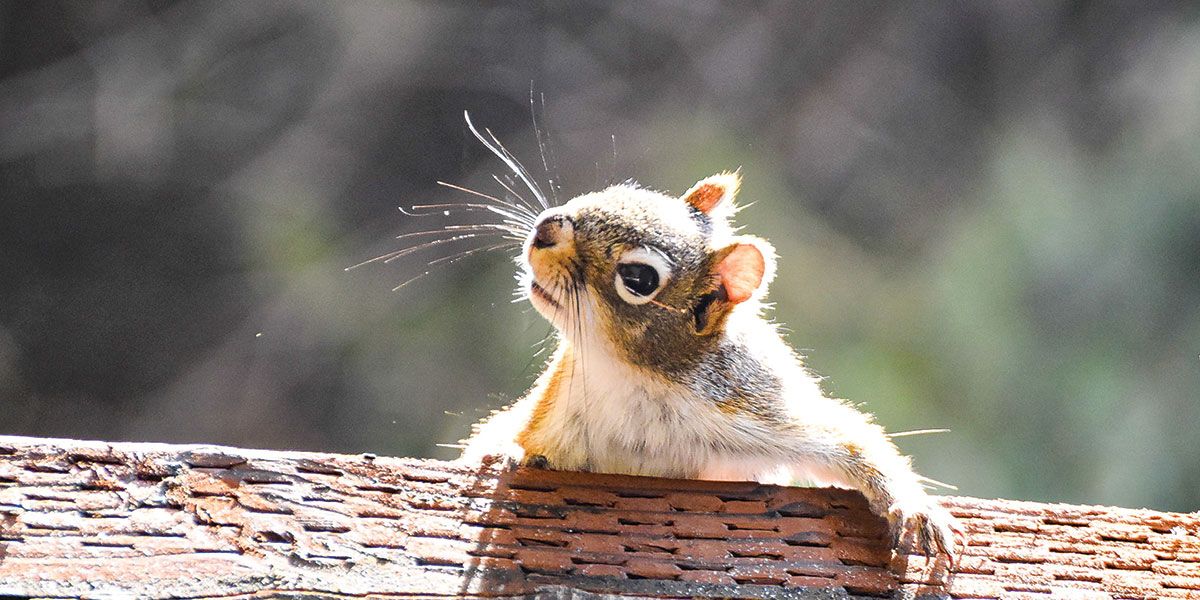KEEP THE CRITTERS OUT

Attention & Diligence Key to Preventing Harmful Guests
Some unexpected guests bring a pleasant surprise, the opportunity to reconnect with an old friend or neighbor. Others can bring headaches and disruption — especially if they have fur, wings or claws.
Thanks to our state’s climate and geography, homeowners can find themselves hosting a variety of uninvited occupants: squirrels, bats, birds, mice, rats, groundhogs, skunks, snakes and raccoons. Even if you believe your home is impenetrable, think again.
 What to look for
What to look for
“Nothing can be sealed 100 percent,” says Devin Mann, owner of Critter Control in Lynchburg. “A contractor builds a home to make sure water doesn’t get in. Water runs downhill, but animals run uphill. And animals follow each other, so a mouse can start it, but you can end up with a raccoon in your attic.”
Animals who have taken up residence in your interior reveal themselves in a variety of ways. Mice or rats may leave small, pellet-size droppings. Squirrels may make noise, either as they scamper through spaces in the walls or chew on wood and wires. Birds and bats can also be heard as they flap around an attic. And, of course, you may catch a glimpse of something entering or exiting your house … or — literally — hanging out in a living space. Maybe worst of all, an animal that dies somewhere in a house will eventually begin to smell.
Additional signs, says David Moore, a board-certified entomologist and manager of technical services for Dodson Brothers Exterminating in Lynchburg, include shredded packaging or cloth useful for nesting, greasy smudge marks on baseboards (residue from oily fur) and gnaw marks on furniture. Pets can also raise the alarm, he says.
 “Cats and dogs will pay attention to a particular area, the scent left behind,” he says.
“Cats and dogs will pay attention to a particular area, the scent left behind,” he says.
What to do next
Once an animal has found its way inside, you can take action yourself or call a professional. “In general, the average homeowner can do something on their own,” Moore says. He recommends a few considerations: “What is your tolerance — are you comfortable killing something or handling an animal? Do you have the time? Are you available? Are you a DIY type?”
Another issue is the critter itself, Mann notes. “In order to safely and adequately remove the animal, you must first properly identify what it is,” he says. “If the damage or entry is at an unsafe height or location, professionals are trained and have the proper equipment. If you have a wild animal in the living space around a family member or pets, it’s best to call in someone who has the training and safety equipment to catch and remove them.”
 Bats require special care
Bats require special care
Special care has to be taken with bats because Virginia is home to a variety of species, some of which are endangered and protected by state or federal laws. If there’s any possibility the bat has come into contact with a human, the bat should be tested for rabies. And that means it needs to be captured — alive.
“Bats typically don’t bite; they scratch,” Mann says. While an immediate instinct might be to kill the bat in the room, that approach will lead to everyone getting a series of rabies shots, as the way to test bats for rabies requires brain tissue harvested from the bat’s brain within 30 minutes of its death. “If you kill it or throw it out a window, call the doctor right now,” Mann says. “If you show one symptom from rabies, you will die.”
Because of bats’ protected status, they can only be removed from a home during specified months in the spring and fall, so as not to disturb reproduction and hibernation. If bats are in an attic, they get to stay until the approved window of time. “This September, we had more than 20 customers who had been waiting,” Mann says.
Getting them to leave
Despite animals’ creativity in finding their way indoors, simple preventative measures can reduce the likelihood of unwelcome intrusions. “All animals need food, water and shelter,” Moore notes. “Eliminate at least two of them, and they’ll go away.”
Careful inspections of your home’s exterior is a must, he says, noting that small holes can lead to big problems. “If your pinky can fit into a hole, then a mouse can,” he says. “If your index finger can fit, then a rat can. If your fist can fit, then so can a raccoon.”
 Keep tree limbs away from the roof, so animals don’t have an easy path. At the ground level, keep an 18-inch barrier of river rocks around the house’s perimeter, and trim bushes and shrubs so they don’t become welcoming homes. Avoid plants with above-ground root systems, as these can foster tunneling. Keep bird seed or pet food indoors, and put all trash in cans, weighting the top with a brick if necessary. Remove piles of yard waste.
Keep tree limbs away from the roof, so animals don’t have an easy path. At the ground level, keep an 18-inch barrier of river rocks around the house’s perimeter, and trim bushes and shrubs so they don’t become welcoming homes. Avoid plants with above-ground root systems, as these can foster tunneling. Keep bird seed or pet food indoors, and put all trash in cans, weighting the top with a brick if necessary. Remove piles of yard waste.
 Should all your best efforts fail, and you find yourself face to face with a visitor of another species, as hard as it might be, resist the urge to flee while you wait for help.
Should all your best efforts fail, and you find yourself face to face with a visitor of another species, as hard as it might be, resist the urge to flee while you wait for help.
“If you aren’t keeping eyes on it until we get there, the likelihood of us catching that animal is very, very low,” Mann says. “Don’t just close the door to the room. It’s absolutely best to maintain eye contact and call us. We’re equipped to deal with this.” ✦
bats, Birds, critters, droppings, endangered, groundhogs, mice, noise, raccoons, rats, skunks, snakes, squirrels








